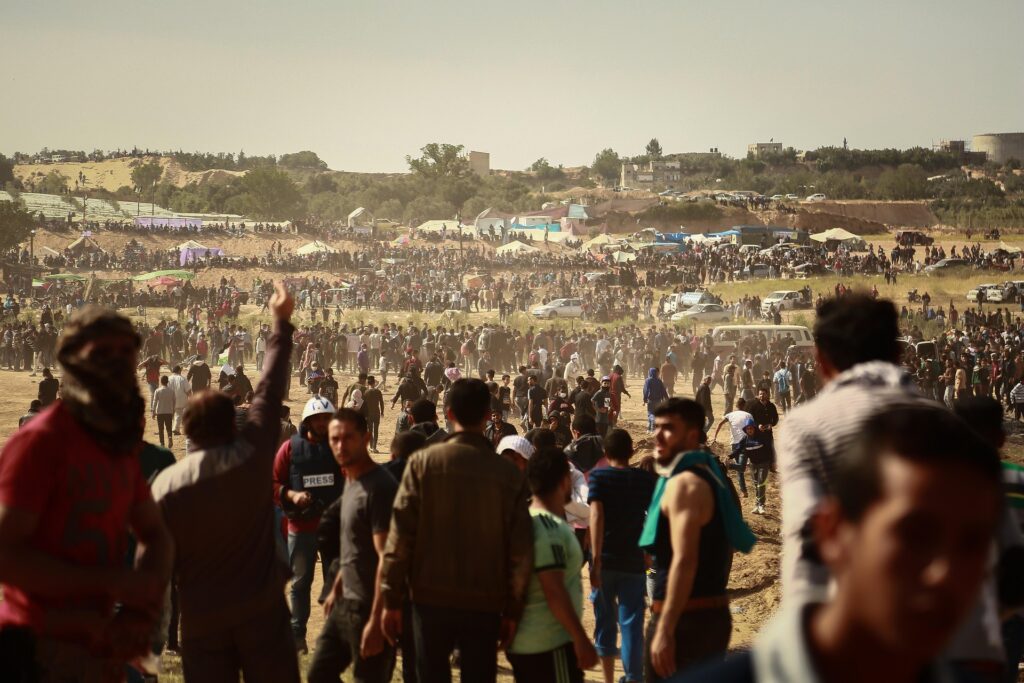On March 18, 2025, a massive Israeli Defense Forces (IDF) airstrike hit the Gaza Strip. In just one day, at least 404 people were killed and 560 injured. As ceasefire negotiations between Israel and Hamas effectively collapsed, full-scale military operations resumed. In Gaza, efforts continue to search for survivors among the rubble of destroyed buildings, while hospitals face a severe shortage of medical supplies needed to treat the wounded.
The reason behind the Israeli airstrikes is clear. Hamas has not released the remaining 59 Israeli hostages and has shown no willingness to extend ceasefire negotiations. Israeli Prime Minister Netanyahu firmly stated, “This military operation is not mere retaliation. It will continue until Hamas surrenders and returns the hostages.”

Although there is internal debate within Israel about the continuation of military operations, hardliners argue that Hamas must be completely neutralized. Since the conflict began in 2024, hostility towards Hamas has intensified within Israeli society, and politically, Netanyahu, who promised a firm response against Hamas, is unlikely to back down.
Hamas strongly condemned the airstrikes, calling them a breach of Israel’s ceasefire commitment. Hamas had already released 36 hostages during the six-week ceasefire, and some Palestinian prisoners were also freed. However, from Hamas’s perspective, making further concessions is difficult.
Hamas has consistently demanded a phased hostage exchange in negotiations with Israel, meaning hostages would be released in exchange for an Israeli military withdrawal. However, Israel now insists on “a complete hostage release before a ceasefire.” If this gap remains unbridged, Hamas may opt for a military response.

International Mediation
The international community is calling for an immediate ceasefire. The United Nations (UN) and the European Union (EU) have urged humanitarian aid, stating that civilian casualties “must not increase further.” However, the position of the United States, Israel’s closest ally, is somewhat different.
The White House revealed that it had consulted with Israel before the airstrikes and avoided directly criticizing the military operation. This shows that the U.S. still prioritizes Israel’s security above all else. However, domestic criticism of Israel’s excessive use of force is growing in the U.S., increasing the possibility that the Biden administration may apply additional pressure.
Meanwhile, Middle Eastern countries are closely monitoring the situation. Iran and Hezbollah in Lebanon have hinted at possible intervention if Israel’s military operations continue. If Hamas gains support from these nations and expands the front line, the conflict could escalate from a localized battle between Israel and Hamas to a broader Middle Eastern war.
Low Ceasefire Prospects, Worsening Humanitarian Crisis
Israel has made it clear that it will continue its military operations, with Prime Minister Netanyahu prioritizing force over negotiations. Meanwhile, Hamas, accusing Israel of breaking the ceasefire, is more likely to choose a hardline response rather than further negotiations. With both sides firmly opposing each other, Western nations and the U.S. favor diplomatic solutions, but their ability to directly control Israel’s military actions is limited.
The potential involvement of third parties such as Hezbollah in Lebanon and Iran is also a crucial variable in determining the future course of this conflict. If these actors intervene directly, the confrontation could expand beyond a regional conflict between Israel and Hamas, drawing in the broader Middle East.
The war currently unfolding in Gaza is more than just a series of airstrikes and counterattacks. How it will conclude remains uncertain, but at this point, the likelihood of further casualties is high. Without international mediation, this war may drag on, deepening the humanitarian crisis in Gaza. Perhaps the conflict between Israel and Hamas is now entering a new phase.






